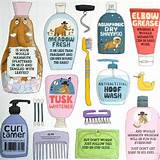Toby and the Ice Giants is a story and an information book rolled into one. It tells the tale of the young Toby, a bison, as he ventures away from the herd for the first time. Like other similar stories (Monkey Puzzle by Julia Donaldson, The Bad Tempered Ladybird by Eric Carle, Brown Bear, Brown Bear What do you See? By Bill Martin ) Toby meets other creatures as he journeys, many of which are quite scary to Toby. However, unlike these other stories all the creatures that Toby meets are genuine animals that were around during the Ice Age.
 The book would support any study of the Ice Age as each page includes a fact file of the creature that Toby encounters which details its Latin name, size, weight, diet, habitat and when it died out. The fact file also includes an illustration which demonstrates how big the animal was in comparison to a human.
The book would support any study of the Ice Age as each page includes a fact file of the creature that Toby encounters which details its Latin name, size, weight, diet, habitat and when it died out. The fact file also includes an illustration which demonstrates how big the animal was in comparison to a human.
During the Ice Age, it would have been impossible for Toby to have met all if these creatures as they originate from various countries all over the world. We are made aware if this fact in the author's note at the end of the book. At the very beginning of the book Lillington includes a very useful and informative map of the world which illustrates the countries each of the animals would have been found.
The back of the book has a size comparison chart ranging from the smallest (a young human child) to the largest, the woolly mammoth.
In terms of English, much of the story is told through dialogue which is highlighted in small ovals which are paler than the rest of the illustration, almost speech bubbles. This would provide a model for that important transition for children: moving from speech in speech bubbles to punctuated direct speech embedded in the written text.
As the majority of the story is told through direct speech teachers could explore with children how authors develop characterisation through speech without having any descriptions. We can identify with Toby's emotions throughout the story through the things he says.
Lillington's rich style of illustration brings an almost retro charm to the story. The facial expressions on each of the creatures again gives insight into their thoughts and emotions.
Publisher: Flying Eye Books
Publication Date: Sept 2015
ISBN: 978-1-909263-58-1








